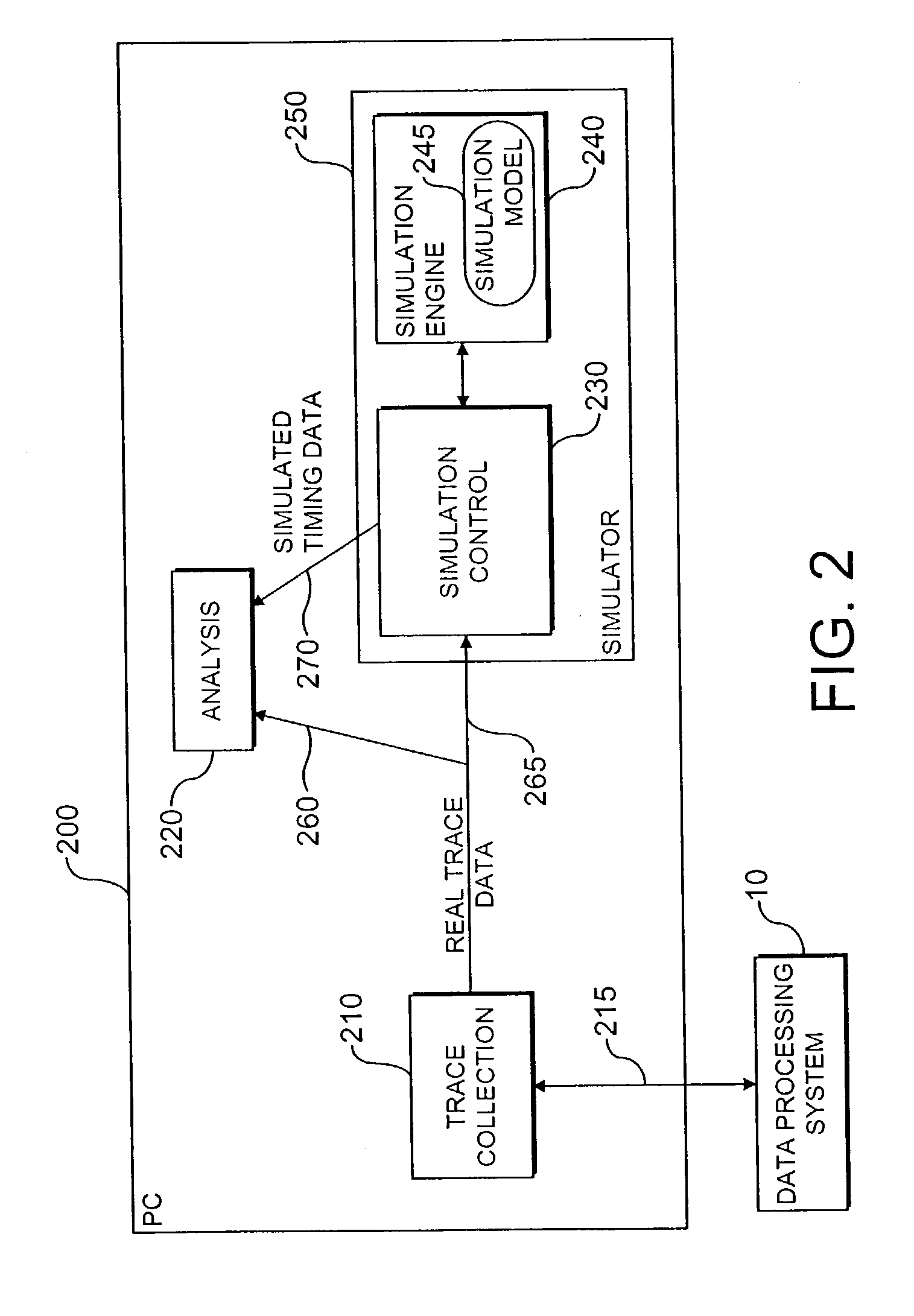Analysis of the performance of a portion of a data processing system
a data processing system and performance analysis technology, applied in the direction of program control, specific program execution arrangements, analog and hybrid computing, etc., can solve the problems of performance problems, difficult to build an accurate simulation of a complete data processing system, and become more difficult to track the state of the processor core via externally accessible pins
- Summary
- Abstract
- Description
- Claims
- Application Information
AI Technical Summary
Benefits of technology
Problems solved by technology
Method used
Image
Examples
Embodiment Construction
[0036] FIG. 1 is a block diagram illustrating relevant components of a data processing system with which techniques of the preferred embodiment of the present invention can be used to analyse the performance of the off-chip memory system of that data processing system.
[0037] The data processing system 10 includes a chip 40 incorporating a processor core 80. The processor core 80 includes an Arithmetic Logic Unit (ALU) 100 that is arranged to execute a sequence of instructions on data values stored within the registers of a register bank 90. When a data value is required by the processor core 80, a request for that data value is output over path 75 to the cache 70. Assuming the data value is within the cache, it is returned over path 75 to the processor core 80 whereupon it is stored within a register of the register bank 90. However, if the data value is not within the cache, then a request for that data value is passed via the on-chip bus 55 to the memory controller 50 to request r...
PUM
 Login to View More
Login to View More Abstract
Description
Claims
Application Information
 Login to View More
Login to View More - R&D
- Intellectual Property
- Life Sciences
- Materials
- Tech Scout
- Unparalleled Data Quality
- Higher Quality Content
- 60% Fewer Hallucinations
Browse by: Latest US Patents, China's latest patents, Technical Efficacy Thesaurus, Application Domain, Technology Topic, Popular Technical Reports.
© 2025 PatSnap. All rights reserved.Legal|Privacy policy|Modern Slavery Act Transparency Statement|Sitemap|About US| Contact US: help@patsnap.com



